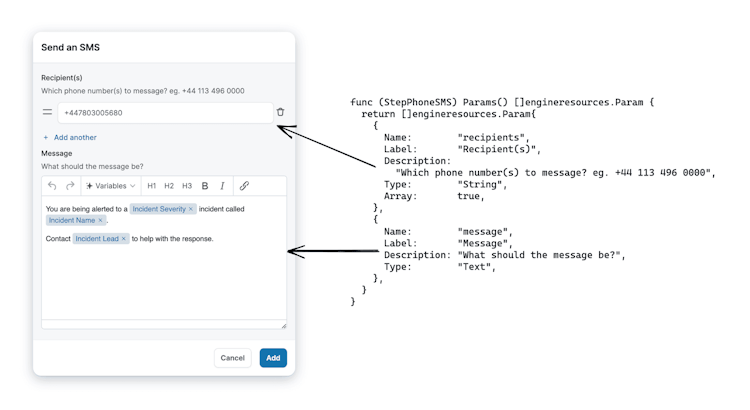
It goes without saying that incident response should be a priority for all businesses.
Even the largest and most well-prepared businesses regularly experience incidents, so smaller organizations can't assume they won't have to deal with the same.
The only way to be adequately prepared is to ensure that you have an appropriate incident response plan to kick into action when, not if, an incident occurs; doing so will allow you to respond to incidents tactfully instead of using an ad hoc approach.
What is incident response?
Incident response covers all the procedures, policies, tools, and processes your organization uses to identify and resolve all types of incidents, from the highest severity down to ones of minimal impact. A response plan includes your incident response team, strategies for categorizing incidents, and the response framework you follow, from declaration down to the post-mortem analysis.
Why is having a dedicated incident response process so important for your organization?
Preparing for a cyber attack, malware, data breach, or some other run-of-the-mill incident can help minimize damage to your organization, including revenue or data loss, data theft, disruption of critical services, business downtime, and damage to your IT systems. Effective incident response can also help you avoid damaging your reputation and losing the trust of your customers.
It’s worth remembering that many businesses must comply with regulatory guidelines requiring a robust incident response plan. If you handle debit or credit card transactions or store other personally identifiable information, you are legally obligated to implement adequate security measures.
Understanding the incident response lifecycle
The incident response life cycle is the framework you use to respond to and manage security incidents. According to the National Institute of Standards and Technology, the elements of an incident response life cycle are:
- Preparation
- Detection and Analysis
- Containment, Eradication, and Recovery
- Post-Incident Activity
These steps are not linear activities but are iterative, ongoing processes. Each stage will be influenced by activities in other phases. For example, insights gained from post-mortem analysis will be used to improve your overall plan. Your recovery efforts will help secure your system and upgrade your detection and analysis efforts.
Incident response roles
A crucial part of your incident response process is putting together an incident response team. In many cases, that team will consist of business, legal, and engineering folks with expertise in handling major incidents. The exact makeup of your team will vary based on your specific needs and the size of your business (smaller orgs may just have an engineer or two managing incidents) but a comprehensive team should include the following roles:
On-caller
The on-caller is the first team member notified in the event of a high-priority incident. This role is generally shared among team members, so one person doesn't bear all responsibility. These folks are your lifeline should an incident happen during off-hours.
Incident lead
The incident lead will take a 360-view of the incident and direct the response. They'll keep the team focused on following the incident response plan and mitigating any potential damage.
Communications lead
The incident communications lead coordinates communication with internal and external stakeholders and the rest of the communications department to provide updates about the team's progress.
Security analyst
The security analyst leads the team in analyzing the vulnerabilities that contributed to the incident and developing a plan for improving security procedures in the future.
What are the 6 steps in the incident response lifecycle?
It’s hard to put together an effective incident management framework without a dedicated and well-thought-out response process. Knowing your incident response process steps before an incident occurs is the only way you'll be able to manage it as quickly and efficiently as possible. Here’s a general idea of what your potential framework could look like. For the most part, this methodology is pretty standard when it comes to incident response:
Step #1: Preparation
Your incident response begins long before something has gone wrong. The preparation phase is the most important step in equipping your incident response team to protect your business. The first part of your preparation should include developing a comprehensive incident response plan that details how your response team will handle an incident. You should have a different response plan for incidents of varying severity and priority levels since your response to a high-priority event will differ from your response to a low-priority event.
All team members and other employees who will need to take action should be trained on the proper steps. Incident response drills and mock scenarios such as Game Day’s should be included in your training process. Your team should not be fumbling through the plan for the first time during an actual incident—so document and test your plan before you need to put it into action.
Step #2: Declaration
The goal of the incident declaration phase is to recognize and raise an issue as soon as possible and categorize it based on severity, priority, scope, type, and any other categories you've outlined in your plan.
Step #3: Resolution
Resolution is key when dealing with any type of incident, whether it's a security breach, a data leak, a software defect, or a system outage. Isolate any affected systems and networks to prevent the problem from spreading. Ensure you have backup systems and containment procedures in your incident response plan to recover compromised data.
Step #4: Containment
After you've contained the incident, investigated it, and documented everything you need to know, the next step is closing it out. Find and correct all vulnerabilities so you can mitigate any damage and take steps to prevent a recurrence.
You may need to remove compromised software or components, patch vulnerabilities, and ensure all of your software and systems are updated to effectively eradicate the root cause of the incident. To be thorough, conduct additional scans or testing to double-check that the issue was completely resolved.
Step #5: Recovery
Recovery involves restoring your networks and systems to working order in business operations. You may need to restore data from backups, reinstall software, or rebuild servers or network components affected by the incident.
Step #6: Incident post-mortem
The last step of your incident response process should be conducting a post-incident analysis to learn how to further improve your systems to avoid repeat incidents. Your response team will meet to debrief, document, and analyze all aspects of the incident—from preparation to recovery. It’s a good idea to discuss questions such as:
- Were we adequately prepared to deal with the incident?
- How could we have responded differently for a better outcome?
- Did we have all of the team members we needed?
- Should we make any changes to our incident response plan?
- In retrospect, was this incident accurately categorized?
- Is our current post-mortem template what we need it to be?
Leverage incident response tools to empower your team
incident.io is a comprehensive incident response platform that streamlines all phases of the incident response life cycle. You can customize severity and priority levels and develop incident response plans based on the unique risk profile of your business.
Incident responders will have access to a robust suite of features and automations that enable easy collaboration, and dashboards that provide insights for improving your security posture. incident.io also integrates with your monitoring tools for a seamless response process.
Book a demo today.




